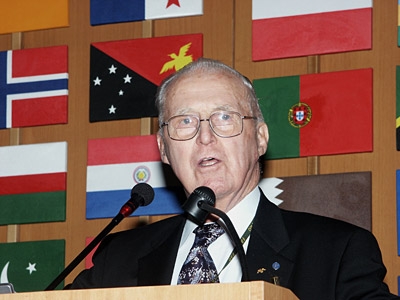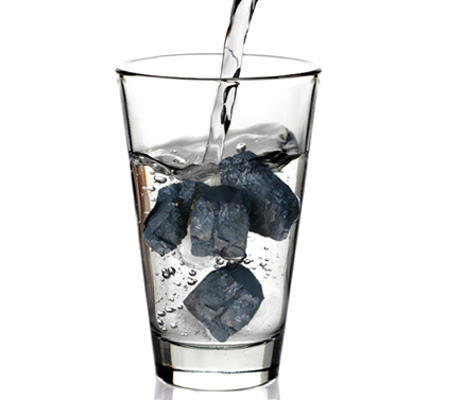Many readers of the New York Times probably dropped their jaws in amazement at the lead story on Sunday: Seven-year-old Ryan Massey, of Prenter, West Virginia, smiled back with capped teeth, the enamel devoured by toxic tap water. His brother sported scabs and rashes, courtesy of the heavy metals–including lead, nickel–in their bath water.
If you think every American child should have the right to a glass of clean drinking water and a safe shower, then check out the accompanying slide show and video.
Thanks to Times reporter Charles Duhigg, the rest of the United States got a glimpse of daily life in the Saudi Arabia of coal–in the coalfields of Appalachia, where coal companies are “pumping into the ground illegal concentrations of chemicals–the same pollutants that flowed from residents’ taps.” And the coda: “But state regulators never fined or punished those companies for breaking those pollution laws.”
As part of the Times’ gripping “Toxic Waters,” series, Duhigg’s portrait of the Clean Water Act violations in West Virginia–and the indifference of state agencies–blew the cover on one of the worst kept secrets in Appalachia: Coal slurry injected into abandoned mines and dumped into waterways has contaminated the watersheds of American citizens and their drinking water…and no government agency did anything about it for years until the community finally fought back.
“How can we get digital cable and Internet in our homes, but not clean water?” said Ryan’s mother, Jennifer Hall-Massey, a senior accountant at one of the state’s largest banks.
According to Duhigg’s research in Prenter, “Tests show that their tap water contains arsenic, barium, lead, manganese and other chemicals at concentrations federal regulators say could contribute to cancer and damage the kidneys and nervous system.”
That’s just the beginning. As the Aurora Lights “Journey Up Coal River” has noted: “Unsurprisingly, the health problems in this community are also massive: from kidney and liver failure to Parkinson’s-like neurological problems, common respiratory illnesses that last for years despite treatment, and many different cancers. On a single 300-yard stretch of road, five people were diagnosed with brain tumors and nearly every family has someone in and out of the hospital.”
Last month, West Virginia Governor and coal peddler Joe Manchin made a much ballyhooed visit to Prenter, in the midst of legal battles, to announce a new water system for next year. In the meantime, as the Appalachian Voices pointed out, the real headline should have noted: “WV Town to go 8 More Months without Clean Drinking Water.”
Mathew Louis-Rosenberg was not suprised by the NY Times article. The young activist took time from a busy day of lobbying in Charleston, West Virginia, to discuss his work on the Prenter Water Fund, and the impact of the Times investigative piece on the widely denounced West Virginia Department of Environmental Protection.
Biggers: When did you first go to Prenter, WV and why?
Louis-Rosenberg: I first went to Prenter in July, 2008. I was taken there by a man named Bobby Mitchell, a Charleston native who had already been organizing in Prenter for the better part of a year. I had been up to Larry Gibson’s Mountain Keepers celebration and helped build an addition on to his house. After 3 visits up there, I decided to move to WV. Bobby was up there and I had met him the fall before at the Highlander Center’s 75th Anniversary Celebration. He was just thrilled to have somebody to talk the science behind all this (my background is in math, science, and education) and I jumped on board organizing with Prenter.
Biggers: Why and how did the Prenter Water Fund get established?
Louis-Rosenberg: The idea for the Prenter Water Fund first got hatched in a living room in July, 2008. After months and months of trying every avenue anybody could think of to get emergency water for Prenter (we had asked the DEP, the governor, the county commission, all the local elected officials, the public utility and state emergency services) and being told everywhere we turned that there wasn’t any money for emergency water, people were really really frustrated. Drawing on my experiences as a post-Katrina volunteer, I was convinced that we could raise the money and set up an emergency water distribution ourselves. Everyone was totally excited about the idea, and we had a meeting with community leaders in Prenter like Maria Lambert and Patty Sebok. Out of that meeting was launched the Prenter Water Fund, umbrella’ed under Coal River Mountain Watch. The next month we got a $10,000 emergency grant from the Paul and Vivian Olum Foundation and we were off to the races. The first water delivery was the day before Christmas and we have missed one yet.
Biggers: Do you think your work, along with other residents and advocates, helped to get the story out to a national audience?
Louis-Rosenberg: Absolutely. The one thing that I was disappointed about in the article was the lack of any mention of the tireless work of community leaders in Prenter and their allies to bring this story to light and win the many victories we have won on this issue. Nobody but nobody had heard of Prenter, WV until organizing began there in 2007. Now we are a household name around the State Capitol in Charleston. Many of the leaders and organizers in Prenter spent many hours on the phone with NY Times reporter telling their stories, providing information and connected him with other residents.
Biggers: Do you feel the New York Times article captured the enormity of the problem in Prenter?
Louis-Rosenberg: I think the article (despite a couple of small inaccuracies) did a great job bringing home just how desperate a situation Prenter is in. He perhaps could have stressed just how much of a life and death issue this really is (the cancer and death rates are astronomical).
Biggers: What impact do you think the Times piece will have on the WVDEP in addressing the water issue?
Louis-Rosenberg: I think the article has the potential to be a great weapon for us here in Charleston. I spent all day lobbying in the Capital today to line up sponsors for a bill to ban coal slurry. We took around copies of the NY Times article and boy did people’s ears perk up when they found out about it. The DEP is such a completely failed agency NO! that’s not strong enough. The DEP is so completely the lapdog of the coal industry that I don’t expect this to change their ways. But now when we go to the legislature asking them to ban slurry, when we go to the EPA asking them to take over the DEP, we can say, “Look. The cat’s out of the bag. Everyone knows what’s going on here and you can step up and do something about it or be the people who fiddled while the coal companies poisoned the waters of this state and murdered communities like Prenter.”
For more information, visit the Prenter Water Fund.



